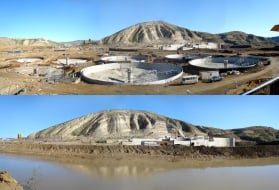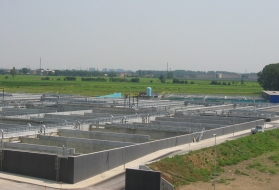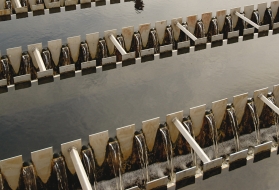lamellar sedimentation
Reading time:principle
Lamellar sedimentation is based on the principle that in free settling, according to Hazen’s law (see different types of sedimentation), granular particle retention is independent of the structure’s height. Therefore, the surface area available for sedimentation can be extended quite considerably by superimposing a large number of water/sludge separation cells on top of the structure’s height.
Figure 20 illustrates the potential savings available on a structure, in terms of flow rate or dimensions, for equivalent treatment effectiveness levels, by superimposing n stages having a height H/n.

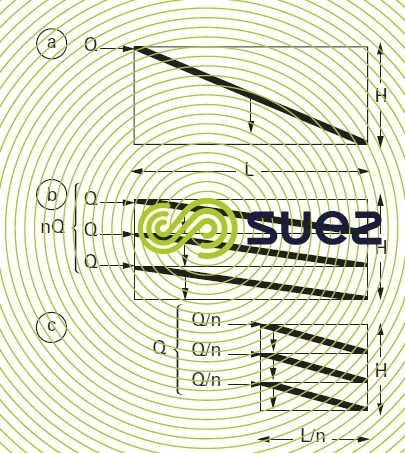

utilisation
Many styles of lamella packs (or lamella) are available: flat sheets, corrugated sheets, round tubes, square tubes, herringbone elements, hexagonal modules.
In order to ensure that the settled sludge is removed by gravity, the lamella are tilted at an angle q in relation to the horizontal plane. The Hazen velocity is then calculated on the projected area of all lamella elements:


where SL = elementary area of each lamella.
Figure 21 illustrates this principle for a system of parallel plates and shows, for the case in point, the equivalent settling area on the ground.

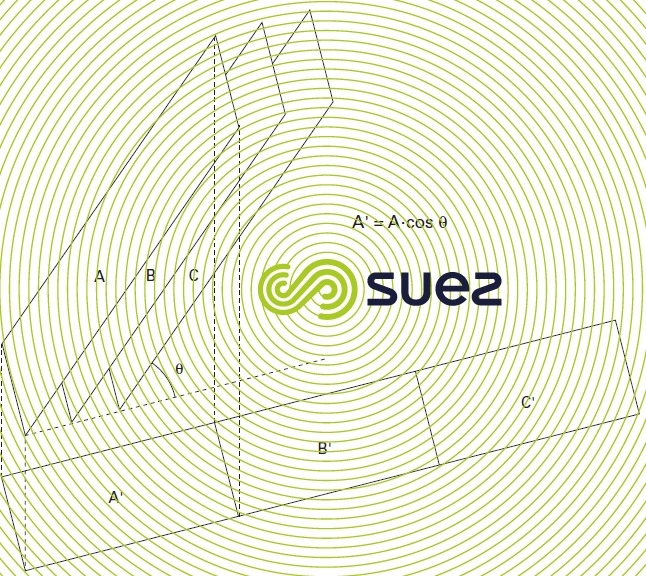

For a lamellar settling tank to be efficient, the particles that have to settle must change their morphology within the lamella by agglomerating so that, once they have exited the lamella, they are not drawn into the liquid flow and do not drop down to the tank floor.
There are three possible types of lamellar settling (figures 22, 23 et 24):
backflow
Water and sludge flow in opposite directions (water upward at a speed V and sludge downward). As it enters into the system, the path followed by a particle is the resultant of V and its settling speed u.
cross current
Water and sludge flow at right angles to each other (water horizontally and sludge from top to bottom).
co-current
Water and sludge circulate in the same direction from the top downward.

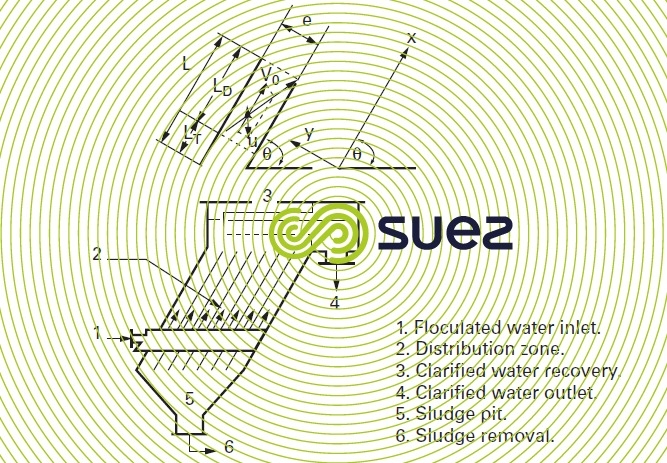


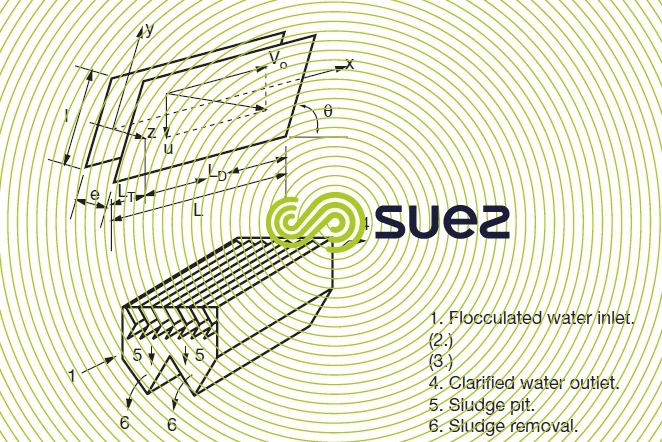


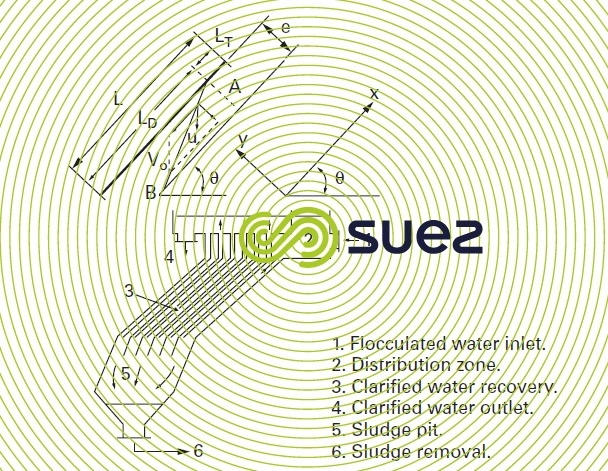

Backflow settling uses the simplest and most reliable hydraulic arrangement. On the other hand, co-current settling comes up against major problems with regard to treated water recovery. Even distribution of hydraulic flows is a delicate matter in Crossflow settling.
choosing the type of lamella packs
A lamellar system’s efficiency relies on several different parameters:
hydraulic
The shape of the lamella must encourage the system to transit from turbulent flow conditions (at lamella intake, zone LT) to laminar conditions (within the lamella, zone LD) and, therefore, we need to avoid lamella support systems that use spacers that hinder flow and settling.
water distribution in the settling cells
Each cell must receive the same flow of water in order to avoid excessive speeds that can cause the settling process to deteriorate.
lamella separation
The gap between lamella must be enough to prevent the lamella from becoming fouled by clarified sludge and to allow them to be cleaned.
equivalent settling surface area
The larger the settling surface area, the better the clarification, bearing in mind however, the comment made above.
Figure 25 uses the equivalent settling area as the parameter for comparing the effectiveness of the different types of lamella packs detailed above.
Hypotheses used for the purpose of comparing the six systems: hydraulic diameter (80 mm), angle (60°) and lamella length (1.5 m).

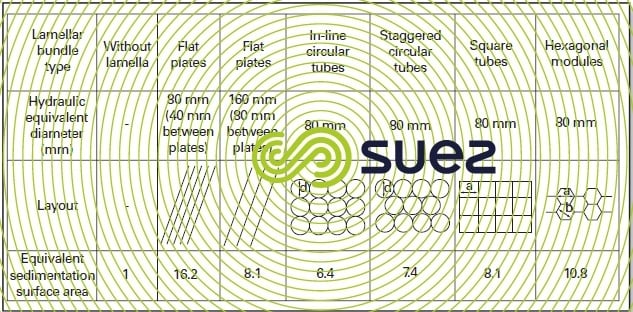

The choice of type of lamellar pack to be used must not be based on the largest possible equivalent settling area; parallel plate packs can develop large areas provided the gap between the plates is reduced, running the danger of producing an installation that is not reliable (risk of fouling) and cannot be operated (cleaning the gaps between the plates becomes impossible).
Furthermore, plate installation is not an easy matter; it calls for the installation of supports and spacers that often interfere with the hydraulics and with clarification and encourages the sludge fouling.
conclusion
Hexagonal modules have a greater hydraulic efficiency than other tubular packs and parallel plates. These modules significantly minimise the danger of fouling while providing a very large equivalent settling area.
SUEZ uses this type of module with 80 to 50 mm hydraulic diameters depending on the applications concerned.
Bookmark tool
Click on the bookmark tool, highlight the last read paragraph to continue your reading later













